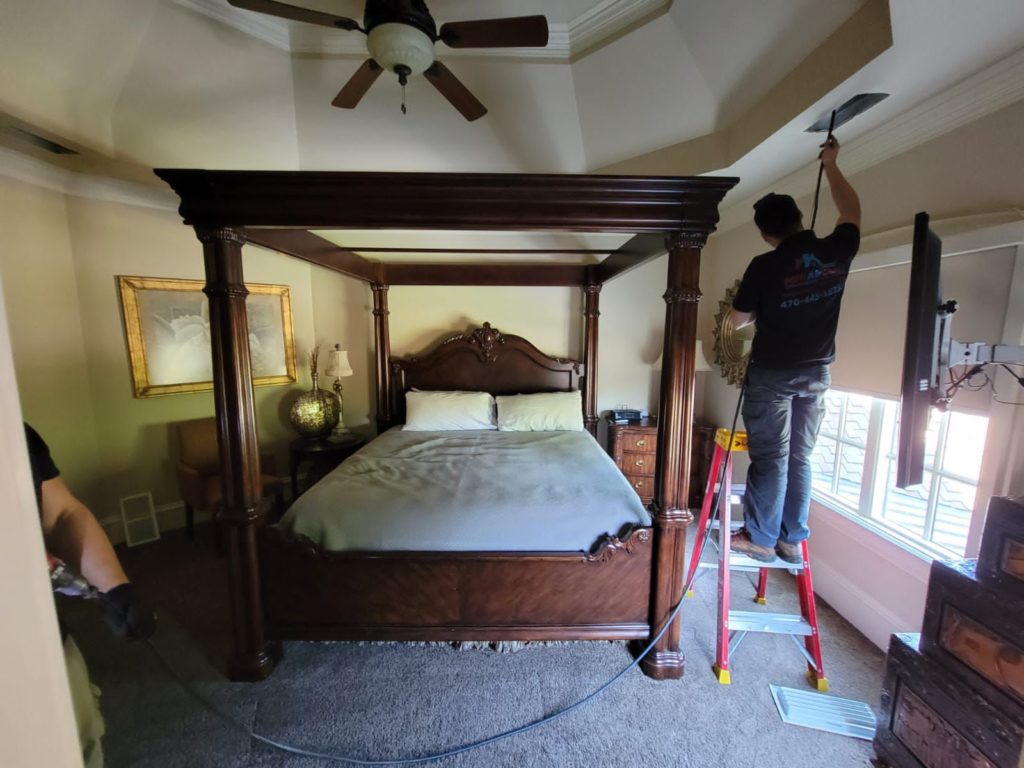Homeowners who have HVAC units installed often face different issues. These include things like regular maintenance, utility/energy bills, cleaning ductwork, and HVAC system. It helps keep your HVAC system running at optimal performance. Each part of an HVAC system plays an important part, no matter how small or insignificant it may be. One such part is the air conditioner deflector.

Types of deflectors
Deflectors usually come in two types
Fixed deflectors
These are already fixed and have limited movement. You might be able to move them as required.
Moving deflectors
These deflectors come with an option to move in a loop or set them in a suitable position for controlling airflow in a room.
Why AC Deflectors?
As mentioned, AC deflectors help control airflow inside a room. It happens when you find hot or cold spots around the house, which commonly is referred to as uneven cooling in your room. Having deflectors fixed towards the area with temperature differences helps keep the atmosphere in a room equal.
Usually, each HVAC unit and vent comes equipped with deflectors. Unless the house is old, with damaged or no deflectors at all, in which case you’ll need to buy one if needed. You can get a ready-made deflector, or you could build one with simple DIY.
Does the Air Conditioner Deflector Work?
Deflectors work better than you think. As mentioned, they work by redirecting air coming from an HVAC unit through a system of vents and ductwork. It makes heating and cooling inside your home optimal without any uneven temperatures. The best part of an AC deflector is that it improves the climate in your home in an efficient way. it, in turn, conserves energy, which reflects positively on energy bills.

When Are AC Deflectors Most Effective?
According to HVAC Cleaning in Lawrenceville, GA, if you don’t have deflectors installed, you’ll need one if:
- You often notice hot or cold air pockets in your home, similar to uneven cooling or heating.
- You find your vents inefficiently blowing air directly into furniture or unused space. If it’s blowing air directly over a heat-producing appliance or the thermostat, you need a deflector.
- You find yourself closing air vents in specific rooms as they get too cold or hot. In any way, this leads to the lower energy efficiency of your HVAC system.
- You’re trying to find more ways to keep your room cooler or warmer without adjusting your thermostat again and again.
How do AC Deflectors Work?
Deflectors help control indoor room temperature by equally spreading airflow in your home. If, at some point, you find hot and cold spots inside a room, turn your deflector towards that area to improve airflow. It fixes uneven cooling or heating in your room and improves indoor climate efficiently. However, if you don’t have a deflector, you can buy one quickly based on your vent size.
Deflectors that you can find in the market are either plastic-made, carbon fiber, or metal. It’s a matter of your preference which one you want to install. With a simple DIY, you can add a deflector made of either plastic sheet or paper. Both of them are equally effective, like the model-specific ones made by companies.
DIY: Air Conditioner Deflector
Usually, deflectors might not be so cheap. It means a DIY comes to save the day. With limited resources, making a deflector is very easy. Moreover, it won’t take much time either but could take some effort. Here, we will work on paper. You can use plastic sheets or cardboard if needed, depending on availability and requirement. According to Air Duct Cleaning in Lawrenceville, GA services, here is a quick step-by-step guide for DIY air conditioner deflector.
Step #1: Gathering task Materials
To start, you’ll need some materials like:
Tape
Scissor
Paper
Finally, a vent where the DIY deflectors will connect.
Step #2: Cutting and Framing
Next, draw and cut out the piece of paper, plastic sheet, or cardboard to the same size as the vent thingy.
Step #3: Taping and Joining
Cut the tape equal to the long side of the vent, or use glue if needed so you can secure the deflector nicely.
Step #4: Taping and Securing
Now, tape the paper on the vent thingy, logically that it forms a deflector. For plastic sheets or cardboard, you may use tape or glue. Secure everything in place properly and carefully. Make sure to secure all sides carefully because you don’t want to seal the whole area.
Step #5: Finalizing the Project
Finally, affix the vent cover with a deflector back if you have removed it. Voilà, your DIY deflector is complete.
Maintenance of DIY Deflector
Believe it or not, maintaining a DIY deflector isn’t that hard. All you need to do is dust off once in a while to remove any dust particles. The best thing is that you don’t even need to move it when cleaning ductwork or HVAC units.
Air Diverters and Air Diffusers: What's the Difference?
When talking about deflectors, two terms pop up, air diverters and air diffusers. The point to be noted is that both are different.
A diverter or deflector (yes, they’re the same) attaches to the diffuser to redirect air. To explain, here is an example; to redirect airflow from empty, unused rooms, a diverter or deflector comes into play—this increases comfort for people in other rooms.
